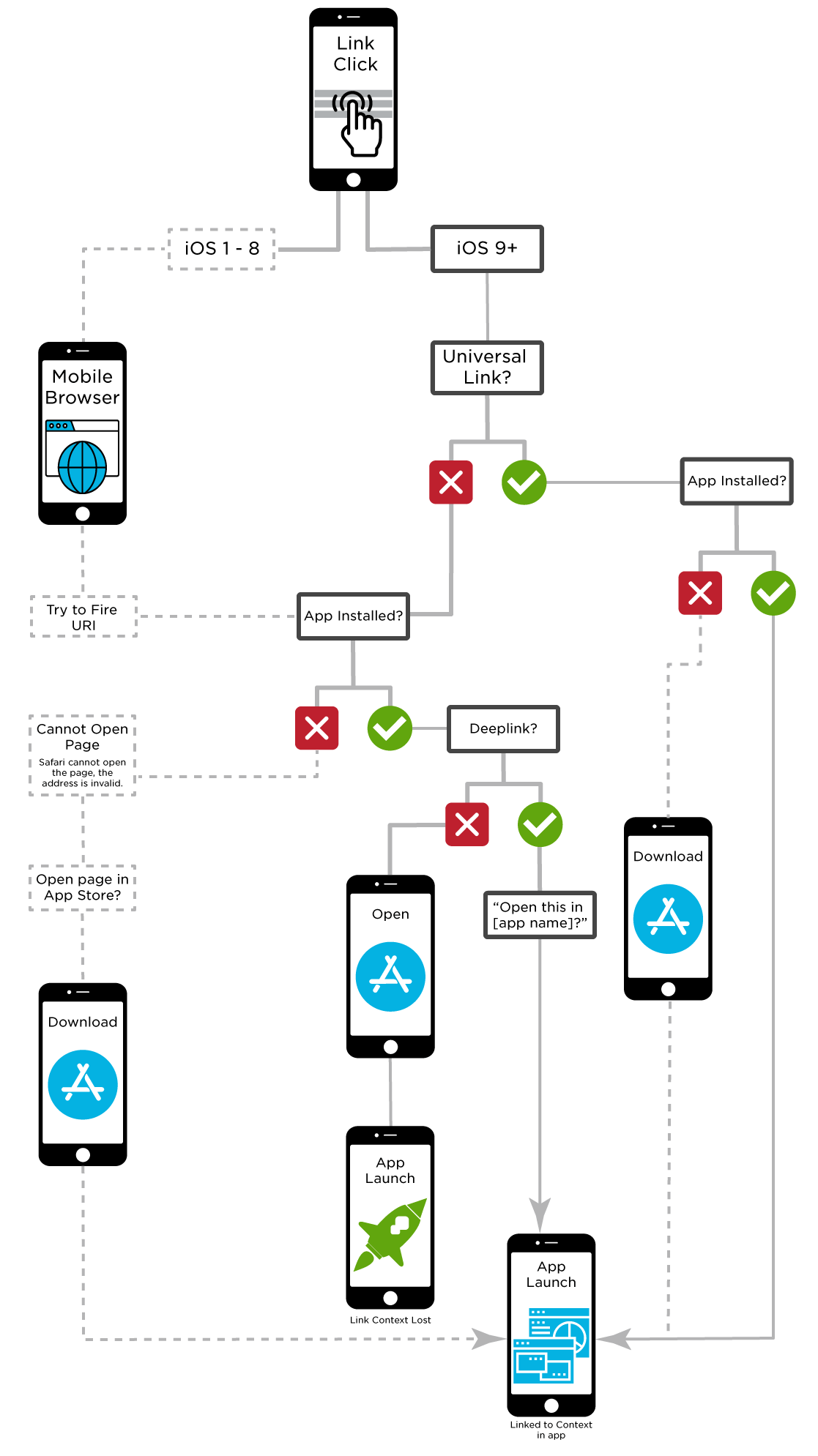Typically messaging apps that utilize SMS messaging systems or email messages will always work.
How Universal Links Work
Universal Links for the most part operate very similarly to deep links with the following exceptions:
- Deep Links use the URI Scheme.
- Universal Links do not have redirects.
- Universal Links are a series of web pages to in-app locations.
When a user clicks on a Universal Link, the iOS operating system redirects the user to the desired location within the app (if the app is installed on the device). The user will view the location from within the app, improving the user experience. This is accomplished because when the app is downloaded a file call the Apple App Site Association file is also downloaded. This special file contains a type of map for the locations to send users when they click on the Universal Link in the future. Code also needs to be created that allows the app to take the user to the correct in-app location.
Universal Links can be added to non-paid media such as a company website or paid media such as a social post. Kochava seamlessly uses Universal Links to perform attribution and deep linking on our customers behalf so that the user is quickly taken to the desired location within the app, if they have previously downloaded the app. If the user has not downloaded the app they will be navigated first to the app store to download the app, and then to the correct location providing the highest of customer experiences.
Limitations and Issues of Universal Links
- Universal Links can be easily broken and/or disabled. If a Universal Link is broken, the operating system will redirect the user to the website URL until the app is reset or upgraded.
- If the Universal Link is pasted into a browser URL field, it will not function properly.
NOTE: During the testing process, it can be useful to paste the Universal Link into an Apple app like Notes will create a better testing environment.
- Universal Links are not able to be triggered via Javascript, unless it happens in the same user action.
- Universal Links cannot be wrapped — Often times when a marketing team creates a link that will be included in an ad presented in an email push or within a network, that link will be wrapped in order to redirect and count the click. If a Universal Link is not directly clicked on, the link will redirect users to the web fallback instead of the app.
- Navigation Arrow that can break Deep Linking — Shortly after the release of Universal Links, Apple added a navigation arrow at the top right of the screen. If this arrow is clicked, the user will be navigated to the attached website. This can be an issue if the fallback website redirects the user to the App Store creating a confusing and problematic user experience. Additionally once the user clicks on the arrow, the operating system will remember the website as the default route for that Universal Link. Moving forward any click on that specific link will send the user to the fall back website instead of the app.
- Universal Links within Apps — In order to keep users engaged within an app, most developers open an internal browser when an HTTP link is clicked. When this occurs, there was no click on a link on the domain in the WebView therefore loading the fallback website as if the app was not installed. This is accurate for loading using either SFSafariViewController or a WebView.
Solutions: - Use an HTTP redirect to send the URLs to the App Store. This option will send a user that already has the app installed to the App Store, displaying an open button when they arrive. This option requires a second click by the user and therefore does not provide the best user experience and may affect conversion rates.
- The WebView within the app can point to a Landing Page created within Kochava which contains the Universal Link.
FAQs
Apps that have a web-view built into them usually work with Universal Links if a webview is already open. Universal Links do not work in-app from the feed or main app views. If you need to have a Universal Link operate through the feed or main app view, you can create a landing page within Kochava with a button that contains a Universal Link behind it. When the user clicks on the link in the app feed, they will be sent to the landing page where they can click on the button and launch your app.
Universal Links in Slack work if they are configured to open in Sarfari, otherwise a landing page will need to be created.
Yes, apps such as Instagram, Pinterest and Telegram.






